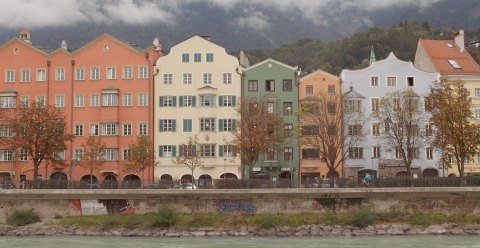Home | About CCW | Contact Us | Climate change Meaning | Causes | Solutions | Emissions | Carbon trading
Emissions trading
Emissions trading is another term for carbon trading , the name given to a market instrument to reduce greenhouse gas emissions by making it too expensive to emit.
Amongst those who seek the smallest cost impact, trading in carbon credits is the preferred way to reduce greenhouse gas emissions and transition to low-carbon economies.
Creating the trading mechanism requires a few steps.
Step #1 is to standardize emissions
Emissions of the four main greenhouse gases (CO2, CH4, N2O and CFCs) are converted to tons of carbon dioxide (CO2) equivalents (tCO2e).
This calculation is based on global warming potentials (GWP), the physical capacity of the gas molecules to absorb energy when in the atmosphere.
CO2 has a GWP of one.
So although absolute emissions of nitrous oxide (N2O) are small, a GWP of 114 means that one ton of N2O is equivalent to 114 tons of CO2. Consequently the relatively small absolute tonnage of N2O released generates 8% of global greenhouse gas emissions.
Step #2 is to create a tradeable unit
Measurement is important to market credibility. Buyers and sellers both need to be sure of what is being traded.
One metric ton of carbon dioxide emitted (tCO2e) is the agreed standard measurement unit and equivalent to one carbon credit .
As tCO2e is a physical quantity, it can be measured directly when emitted in that form, such as in the burning of fossil fuels, or readily converted when the emission is another greenhouse gas. It is also a unit easily applied when carbon is in other forms such as vegetation and soil. All that is needed is a way to measure the amount of carbon in, for example, trees and convert this to tCO2e.
Step #3 is create the market
Buyers and sellers are brought together in a marketplace to exchange credits.
The assumption, of course, is that there are buyers for credits and that legitimate credits can be created for sale.
A few people decide to buy because they think it is the right thing to do. These voluntary purchases, such as to offset the emissions on a flight, are important but so far only represent a tiny volume.
Carbon credits are not like food or clothing, consumers are not the main purchasers. The main buyers are forced into purchasing credits. They are industrial-sized emitters who have an obligation imposed on them by governments to buy credits to offset their carbon pollution.
This is what is called a compliance market. There is a requirement imposed on emitters to purchase offsets to they buy. Obviously they don't want to do this, but they have to. So they buy and look hard for the best price.
This requirement to purchase creates the emissions trading market.
It also creates the opportunity for sellers. Credits need to be created for sale from carbon offset projects.
Governments are themselves potential buyers in this emissions trading market. Countries that have signed the Kyoto protocol also have emission reduction obligations and many will need to buy credits to reduce net emissions to target levels
Step #4 is allow the market to mature, then cap it.
The purpose of emission trading is to both reduce emissions and facilitate the transition to low-carbon economies.
This means that the market created is not a free market for the exchange of goods, but a mechanism to achieve an end goal. Making emitters pay for their emissions is only the start. The important goal is to avoid emissions altogether by making polluting activities uneconomic and the clean alternatives financially attractive.
Once established the supply of credits is gradually reduced through a cap on volume. This forces the credit price up, increasing the financial burden on emitters that ultimately changes their behavior. It is a cap-and-trade system.
The market regulator, usually a government, determines the level of the cap, and the rate at which it is lowered.

Will it work?
The market mechanism makes sense.
Economic modelling of the various existing and proposed schemes around the world suggest that it the best way to impose a carbon price - a cost on carbon pollution - with least effect on a modern economy.
Remember though it is not a market in the true sense.
Goods and services are not exchanged for profit. Purchases are forced and supply is controlled.
Emissions trading is a market tool used to direct behavior.
So far, there is only modest success. The bulk of countries are still outside any formal schemes.
Mostly we are sitting on the "I will if you will" fence, waiting.
The longer the wait the less time there is for a market mechanism to deliver results. And it will take time for the market to work.
Market mechanisms need time to be effective as they change behaviour and activity through pressure on the hip pocket. Emissions trading will work to reduce emissions only if we get on with it; otherwise we will be looking for another way.
Postscript — January 2014
The logic and intent of using markets to reign in emissions through naming and pricing carbon emissions as a pollutant is still sound.
However, as at January 2014 the mechanisms have stalled, outcomes have been modest [and no greater than other effects on emissions such as global economic downturns and high energy prices], and the remaining carbon markets are failing badly.
Public demand for climate change action has cooled allowing the political and diplomatic process to fall away.
Emissions trading may have had its brief time in the sun.
here are some related pages on climate-change-wisdom.com...
Back to the top of Emissions trading | Return from Emissions trading to Carbon trading | Back to Climate-change-wisdom home page
Recent Articles
-
Reducing emissions while looking for solutions...
Nov 01, 15 04:46 PM
I've seen a lot of post's online for ideas on reducing emissions. The one suggestion I have not seen, is the most obvious. There should be a government -
Climate change evidence
Mar 24, 15 06:22 AM
Real climate change evidence has to demonstrate a change in climate. An extra sunny day or a severe storm or a flood is not enough. -
The climate change effect
Feb 19, 15 03:08 AM
What will be the climate change effect? There isn't one, there are many. Perhaps too many for us to understand.



New! Comments
Have your say about what you just read! Leave me a comment in the box below.